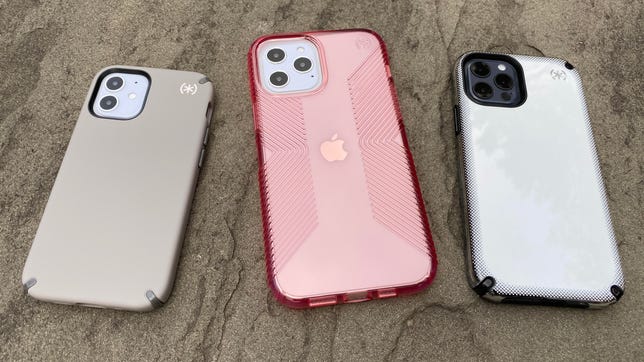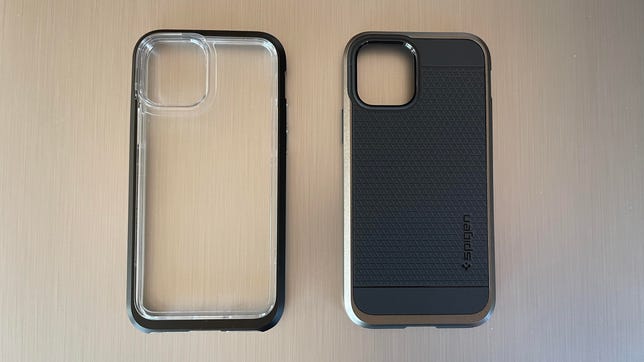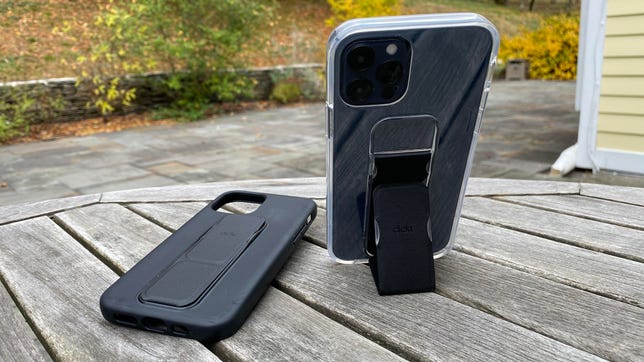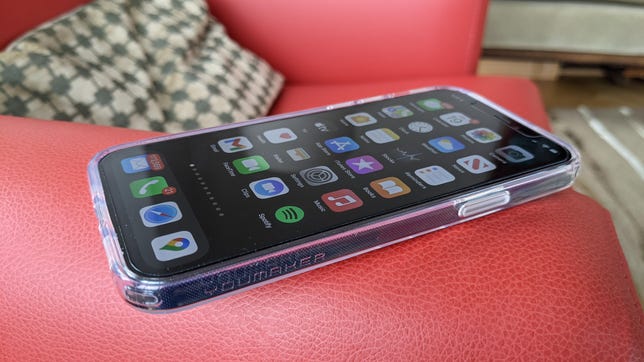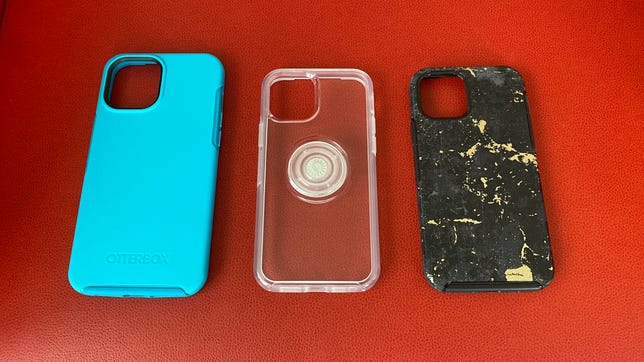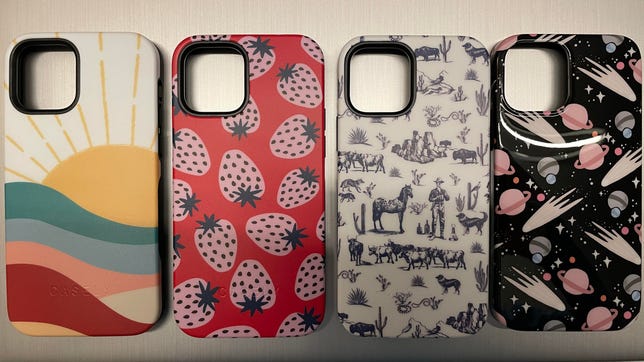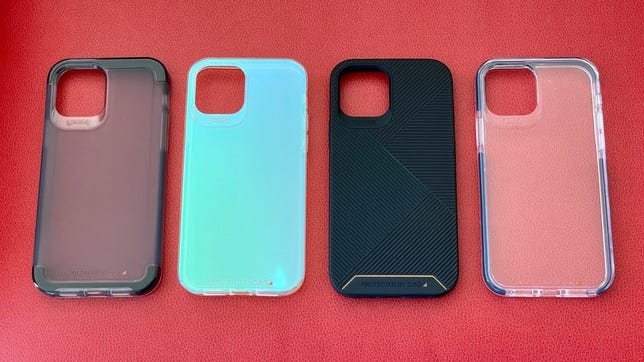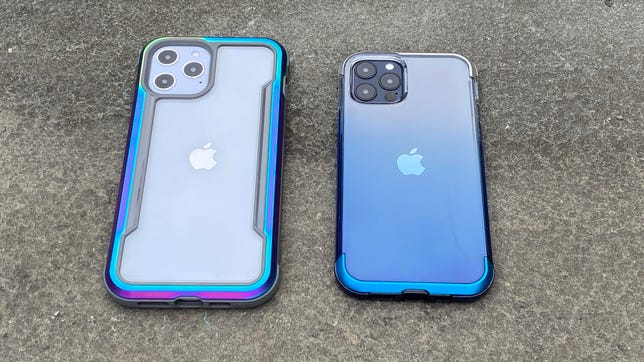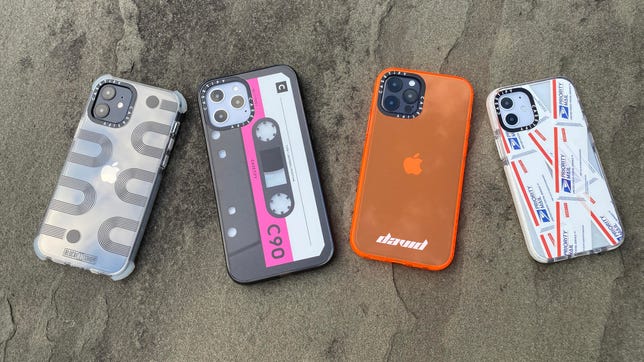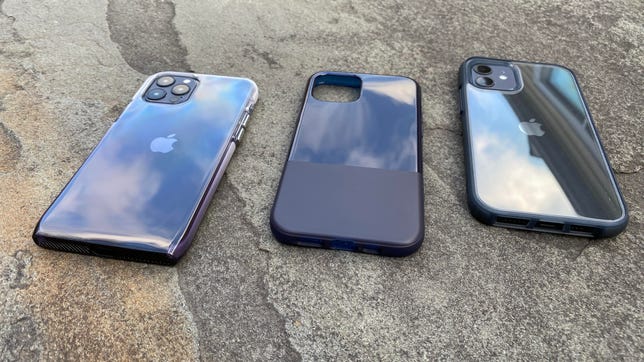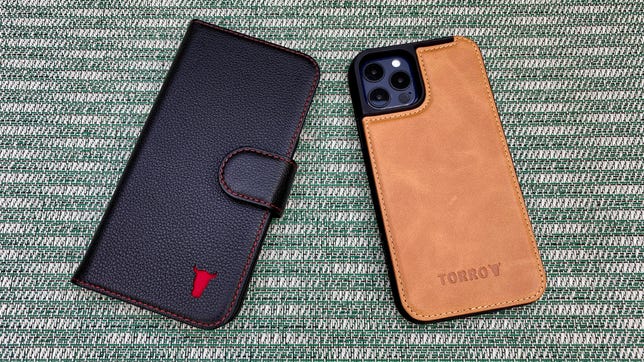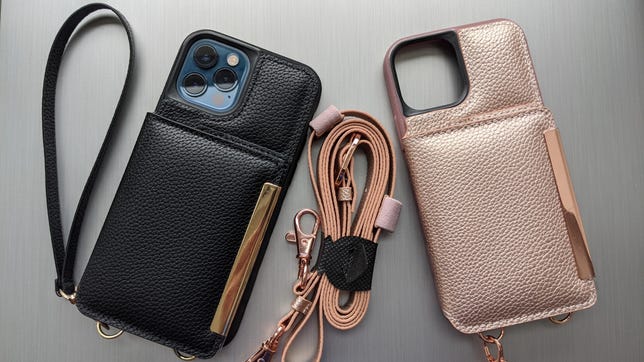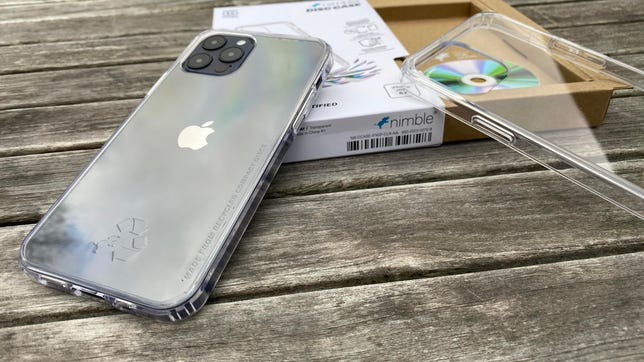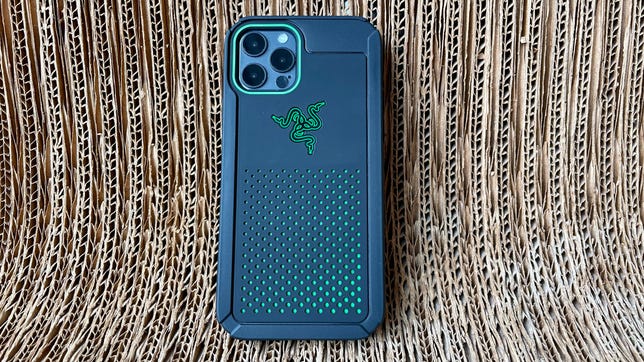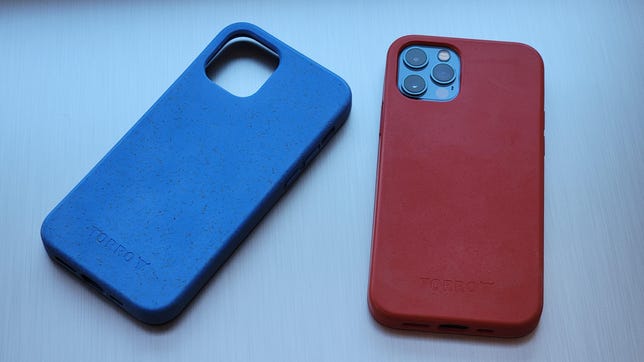Technologies
Best iPhone 12 Cases for 2023
There’s no shortage of choice when it comes to the best iPhone 12 cases.

As advanced as phone screens are, it’s still frustratingly easy to break them. Sure, it’s a couple years old now, but you likely paid a lot of money for your iPhone 12, and that investment needs quality protection. Dents, scratches and cracks are your phone’s enemies. A great phone case is essential to keep them at bay. Here’s a list of the best iPhone 12 cases available today.
Read more: Best MagSafe and Magnetic iPhone Accessories for 2023
The iPhone 12 has what Apple describes as «an array of magnets» embedded around a charging coil that can pull up to 15 watts of power. That’s twice as powerful as wireless charging on previous iPhones, but on par with the power that many Android phones can draw from standard Qi wireless chargers. So, the best iPhone 12 case will support the 15-watt charging speeds while protecting your phone.
To get the 15-watt charging speeds, you’ll need an Apple MagSafe charger or an Apple-approved MagSafe charger from a third-party accessory-maker, but your phone will still charge at up to 7.5 watts with standard wireless chargers that support that speed or higher. Most of the cases on this list are compatible with wireless charging and some are Apple-certified MagSafe cases with integrated magnets. Also, check out our list of best MagSafe and magnetic wireless chargers for the iPhone 12.
Read more: Best Eco-Friendly iPhone 12 and 12 Pro Cases
David Carnoy/CNET
I have expensive tastes, and I personally like Speck’s Presidio2 Armor Cloud (white model on the right in the photo). But the Presidio2 Pro (gray case in the photo) is also excellent. If you want an apple clear case, Speck has several models for iPhone 12 case to choose from, including the Presidio Perfect-Clear with Grips.
All the new models have very good drop protection (13 to 16 feet, depending on the model) as well as Speck’s Microban antimicrobial protection.
Amazon
If you’re looking for a cheap clear case for your iPhone 12, Spigen’s Ultra Hybrid is a good value at around $12 to $15, depending on the trim color and which version of iPhone 12 you have (yes, there are a few color options).
No drop rating is listed for the case, but Spigen’s transparent cases feel like they offer reasonable protection. If you want a tough case with stronger protection, the Spigen Tough Armor case is an option for $17, but I personally prefer Spigen’s Ultra and Neo Hybrid cases. Note that a lot of these cheaper clear cases have a habit of turning yellow and degrading over time (and becoming less translucent), but they’re cheap enough that you probably won’t mind shelling out for a replacement case for your Apple iPhone if that happens.
David Carnoy/CNET
I’ve recently become a fan of Clckr’s cases, which feature a built-in stand and grip strap that folds out and clicks into place on the back of your phone. Clckr sells just the stand-strap accessory to stick on the back of your phone or on a case, but the case with the integrated stand accessory is better and comes in a few different styles, including clear (I like the Saffiano blue but it’s currently only available in black).
The cases aren’t rugged but they’re protective enough, with raised edges to protect the screen. The one I’ve used with my iPhone 11 Pro for the last four months has held up well.
With the stand clicked in place, you can use your device hands-free in either portrait or landscape mode. Note that you can wirelessly charge your phone with this case on, though you have to be more careful about placing it in the right spot on a wireless charging pad for it to work. The new models have antimicrobial protection.
David Carnoy/CNET
There are plenty of inexpensive clear cases and iPhone 12 accessories on Amazon. It seems to be a perfectly good clear case that offers decent protection with raised edges. Whether it will yellow over time, I can’t tell you, but it seems like a good value.
David Carnoy/CNET
I only recently learned that Cyrill is a sister brand to Spigen and its cases are arguably slightly better, although they cost a few bucks more. We’re linking to the Leather Brick case, pictured here in tan and navy (it’s faux «vegan» leather), but the Silicone case (pictured in light blue) and transparent Cecile cases are also good. The Silicone case is basically a knockoff of the Apple Silicone case without the MagSafe feature.
Amazon
OtterBox’s super protective Defender series case is available for all the iPhone 12 models with Magsafe compatibility, but most people want something less bulky. The Symmetry series is slim with beveled edges, making it a good mix of sleek and protective. A raised bumper helps act as a screen protector.
Multiple color options are available, including clear, and I’m digging the clear version of the Symmetry Plus Pop case, pictured in the middle, which integrates a PopSockets PopGrip and is wireless charging-compatible, which is important.
OtterBox’s Commuter case offers slightly more protection and is also pretty slim and has grips on the back.
David Carnoy/CNET
Brooklyn, New York-based Casely makes «cute and protective» cases that have a variety of graphic artists behind their designs. The cases usually cost $25, but the online store often offers discounts.
David Carnoy/CNET
MagSafe accessories will still stick to your phone if you have a standard thin case, but not nearly as well as if you use one of Apple’s MagSafe cases, which have their own set of embedded magnets that line up with the magnets in your phone.
Apple’s Clear Case with MagSafe is nice because it allows you to show off your phone’s colored finish and the embedded markings tell you exactly where to attach the MagSafe charger for optimal charging speeds (you apparently need Apple’s 20-watt USB-C charging to get the maximum 15-watt wireless charging speeds). The only issue with the clear case is that it leaves the bottom of your phone exposed.
If that bothers you, the Silicone case (pictured, left) with MagSafe is the better option. It works the same way as the Clear case does, with an embedded magnet ring, you just can’t see it. The Silicone case is available in eight color options.
MagSafe stuff isn’t cheap, but it is fun to play with magnetic objects and they do offer some conveniences. The bottom line is that if you do want to try MagSafe accessories and to protect your phone with a case, you’re best off with one directly from the Apple Store, or another MagSafe-certified case.
David Carnoy/CNET
KerfCase has been making handmade wooden cases for a while, and its new Plywood case is not only more durable but less expensive than some, starting at $50, with 6-foot drop protection and a limited lifetime repair warranty. I like it better than other wood cases I’ve tried. It’s also worth noting that Apple’s MagSafe charger will stick to the back of it, and KerfCase sells matching charging docks for the Apple MagSafe charger (yes, it’s an accessory for an accessory).
David Carnoy/CNET
British case-maker Gear4, now owned by Zagg, makes cases that are right up there with OtterBox and Speck, all of them lined with the company’s D3O shock-absorbing material and featuring beveled edges to protect your phone. My favorites include (from left to right) the Wembley Palette, Crystal Palace Iridescent, Battersea and Piccadilly. All of them are rated for 13-foot drop protection and the Battersea is rated for 16 feet.
David Carnoy/CNET
X-Doria’s Raptic cases come in a variety of styles and cost a little less than competing premium cases from Speck and OtterBox. The thicker Raptic Shield (pictured on left) costs $30 while the Raptic Air (pictured on right), which I personally like, is $30. The Shield has 10-foot drop protection while the Air is rated for 13-foot drop protection. Both have an antimicrobial treatment.
David Carnoy/CNET
Casetify is known for eye-catching designs on the back of a clear case. They’re relatively slim, sleek-looking cases that offer decent protection and come in a variety of design patterns, with some definite appeal to teenagers. Some of the designs are hit-or-miss but I liked the samples I got. I should note that prices appear to have gone up.
David Carnoy/CNET
Rokform’s been making tough iPhone cases for years and aside from their durability, their key feature is the ability to use them with various mounts — including bike and motorcycle mounts — that are sold separately. I personally prefer the Crystal series but the Rugged case is slightly more, well, rugged.
Rokform’s cases have removable magnets and they’re compatible with wireless charging if you remove the included center magnet. «With the lower magnet still intact, you can still wireless-charge while utilizing magnetic mounting and all of our mounts,» Rokform says.
David Carnoy/CNET
BodyGuardz was initially known for its screen protectors, but in recent years it’s put out some interesting iPhone cases. I personally like the $40 Harmony (pictured left), which has a more square bottom. The Stack (picture in the middle) is $20 while the Avenue (on right) is $45. They come in a few color options.
David Carnoy/CNET
Smartish’s affordable, simple, slim cases and wallet cases return for the iPhone 12. The Wallet Slayer 2.0 case (pictured on left and right) costs a little more now ($25) but comes in a variety of designs. It holds three credit cards plus cash and you can use one of your credit cards as a kickstand.
Smartish also sells a simple translucent case for $15.
David Carnoy/CNET
UK-based Torro makes some nice leather-clad cases that aren’t too expensive (a leather case typically tends to cost over $50). The Torro Leather Bumper ($38) is a pretty straightforward bumper case with a leather back while the leather Wallet Case ($40) is a bit swankier overall, has a magnetic clasp and multiple card slots and converts into a stand for video viewing. It’s one of the better folio wallet cases you’ll find for the money. Both leather case options are available in multiple colors.
David Carnoy/CNET
Like Lifeproof, Catalyst made a name for itself with waterproof cases, but it now focuses on standard protective case options and has two new models for the iPhone 12: the Vibe (left) and the Influence (right), which has a see-through frosted back. Both cases have perforations on the corners that allow you to attach various accessories (sold separately), such as lanyards and carabiners. The Vibe is rated for 10-foot drop protection while the Influence is rated for 15 feet.
David Carnoy/CNET
I’ve always liked Moshi cases and the company’s made versions of its iGlaze, Altra and Vitros cases (pictured from left to right) for the iPhone 12, 12 Pro, 12 Mini and 12 Pro Max. The Altra is the most distinct-looking and has a geometric rubber finish that makes your phone nice and grippy. It also includes a lanyard. Not pictured is the Overture (coming soon), a two-in-one folio wallet case. You fit your iPhone into a slim shell case that then magnetically adheres to the cover, which has slots for storing credit cards and cash. Moshi’s cases range in price from $25 to $50.
David Carnoy/CNET
Nomad makes a line of nice iPhone 12 Horween leather case styles that are designed to develop a «rugged» patina as the oils from your skin interact with them over time. The new Rugged leather case options are available in black, brown and a lighter natural color that I like. They’re rated for 10-foot (3-meter) drop protection.
David Carnoy/CNET
I’m personally not a crossbody case guy (meaning a case with a long strap so you can wear your phone like a purse), but some people love them. You can find some fancy ones out there that cost a lot of money, but if you’re looking for something simpler, the Smartish Crossbody case is around $30 and comes in multiple colors. The iPhone case design incorporates some faux leather and the case offers decent protection along with three slots for storing up to five credit cards and cash in the wallet compartment. You can choose to go with a shorter hand strap or the longer adjustable crossbody strap.
David Carnoy/CNET
Incipio has an assortment of cases for the iPhone 12 lineup, including the sturdy Duo with 12-foot drop protection, the Slim, the Grip and the Organicore, an eco case that’s 100% compostable. All are available in multiple color options, and the Slim comes in a variety of translucent options.
David Carnoy/CNET
You know all those compact discs you no longer listen to? Well, Nimble makes translucent iPhone cases out of them. They’re a little pricey at $40 but some of us like the idea of protecting the latest technology with recycled technology and don’t mind paying a little extra for that. They have antimicrobial protection, are scratch-resistant and aren’t supposed to turn yellow over time. While the Disc Case is slim, it’s rated for 6-foot drop protection.
David Carnoy/CNET
Case-Mate makes a variety of color cases, some of which have glitter integrated into their translucent designs. I only got a look at the twinkle ombre iPhone case, but the iridescent soap bubble and tough groove cases also look cool.
David Carnoy/CNET
If selfies are your thing, then you’re probably aware of the LuMee cases that have built-in lighting. This Paris Hilton-endorsed Holographic version has an iridescent design. It charges via USB-C and gives you 30 minutes of «studio lighting» at full brightness. The case does allow wireless charging and you can adjust the brightness levels of the light.
David Carnoy/CNET
I wasn’t a fan of earlier Pelican cases, which were very protective but just a little too bulky (and ugly), but in the last couple of years (starting with the iPhone 11), the company, now owned by Case-mate, added some slimmer designs, including two that I like: the Protector (pictured, middle in camo color) and the Rogue (at left and right), which has a soft rubber bubbled pattern.
David Carnoy/CNET
Apple upgraded the cameras in its iPhone 12 models, with the iPhone 12 Pro and 12 Pro Max offering step-up camera options (the iPhone Max is the best in the imaging department). But a select few accessory makers like Moment allow you to enhance your shooting with add-on lenses and filters. Sold separately from the case, the lenses aren’t cheap, but they are high-quality.
Moment’s iPhone cases include an insertable mount that can be removed when you’re not playing around with any optional lenses, which are easy to attach. Its Thin Case is a simple but attractive rubberized case made of compostable bioplastic that’s rated for 6-foot drop protection. Cases with wood and canvas on their backs are also available.
David Carnoy/CNET
Razer, which makes laptops and gaming accessories (among other products), also makes iPhone «gaming» cases. They have something called Thermaphene-Based Heat Dissipation that «redirects trapped heat through a thermally conductive lining adjacent to vented airflow channels to significantly improve cooling compared with traditional cases.» It’s a bit of a gimmick, but it seems to help a little when you’re playing graphics-intensive games for long periods.
Razer had a slim Arctech case for the iPhone 11, but right now it only has the Arctech Pro for the iPhone 12 and 13 models. It was redesigned from the previous year’s Arctech Pro — it seems even more protective — and adds an antibacterial coating.
David Carnoy/CNET
Environmentally friendly smartphone cases are rapidly proliferating as more companies are making an effort to manufacture products out of recycled materials or materials that are biodegradable. The Torro Eco Cover for the iPhone 12 and 12 Pro falls into the latter category, and like many eco cases, it’s pretty simply designed.
While it’s made out of renewable plant-based raw materials such as corn and cassava — no plastic is used — it feels similar to a firm plastic case and has a slight bit of grip to it. It also seems pretty protective and has raised edges to help protect your screen in the event you drop your phone face down. Torro says the Eco Cover is only biodegradable in a composting environment; you simply place it in your home compost bin and it’ll break down.
It’s also available for the iPhone 12 Mini, but I didn’t see a listing for a version for the iPhone 12 Pro Max.
More iPhone accessories
- Best Headphones and Wireless Earbuds for iPhone 12
- Best Apple AirTag Accessories
- MagSafe Accessories for iPhone 12: Chargers, Cases, Wallets
- Best iPhone Fast Chargers at the Lowest Prices We Can Find
- Best Cheap Wireless Earbuds for 2023: Great Budget Picks
- The 8 Best Wireless Car Chargers for 2023
- Best iPhone in 2023: Which Apple Phone Should You Buy?
- Best Cases for iPhone 13, iPhone 13 Pro and iPhone 13 Pro Max
Technologies
If You Were ‘Tricked’ Into an Amazon Prime Subscription, You Should Have Been Paid by Today
Amazon is paying $1.5 billion to people who mistakenly subscribed to Prime, and the first round of payments are due today.
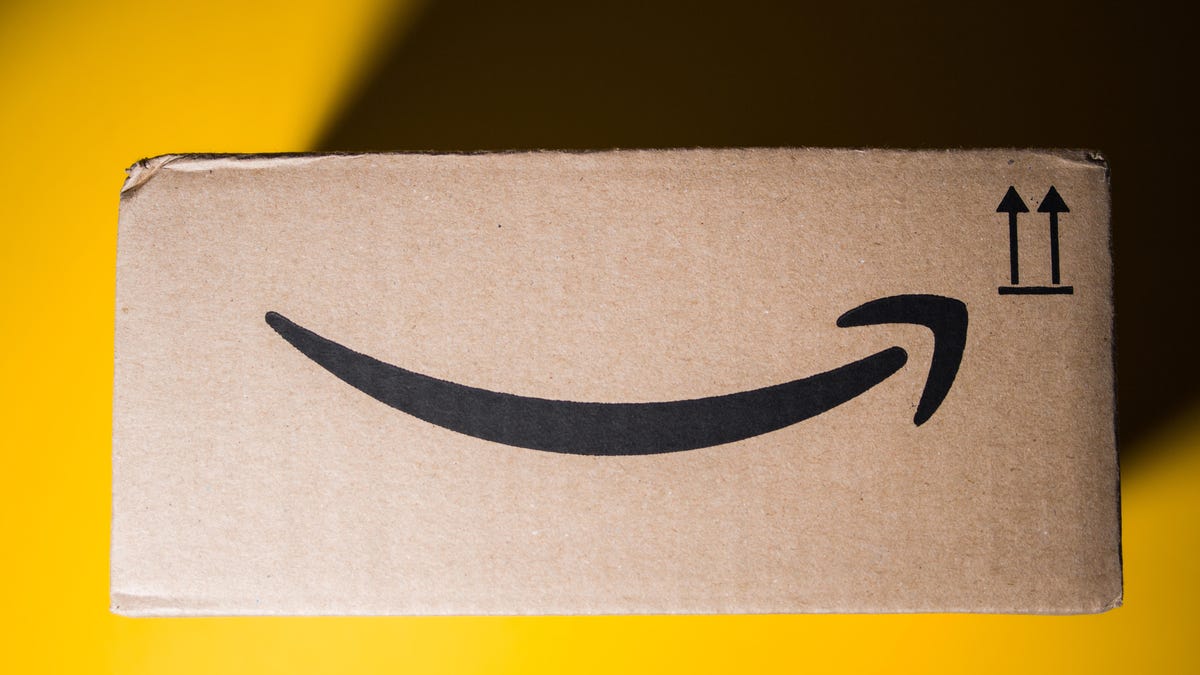
Amazon Prime provides a lot of valuable benefits to its members, but the company’s registration practices for its premium subscription from 2019 to 2025 led to many customers accidentally subscribing to a service they didn’t want.
Amazon is now paying the price for that deception — the US Federal Trade Commission levied a massive $2.5 billion settlement on the company for its subscription tactics.
The majority of the settlement — $1.5 billion — has been earmarked to refund eligible subscribers, with the rest serving as a civil penalty. Amazon is also now legally required to provide a clear, obvious option to decline Prime, making it as easy to leave the service as it is to join.
Amazon isn’t admitting to shady behavior. «Amazon and our executives have always followed the law, and this settlement allows us to move forward and focus on innovating for customers,» Mark Blafkin, Amazon senior manager, said in a statement. «We work incredibly hard to make it clear and simple for customers to both sign up or cancel their Prime membership, and to offer substantial value for our many millions of loyal Prime members around the world.»
The online retail giant started sending out payments to eligible people in November and was supposed to conclude its initial automatic payments today, Dec. 24. Read on to learn more about Amazon’s settlement and what to do if you think you’re eligible for compensation but didn’t receive a payment.
Why did the FTC fine Amazon?
The FTC filed suit against Amazon, accusing the company of using «dark patterns» to nudge people into Prime subscriptions and then making it too hard to cancel. The FTC maintained Amazon was in violation of Section 5 of the FTC Act and the Restore Online Shoppers’ Confidence Act.
«Specifically, Amazon used manipulative, coercive or deceptive user-interface designs known as ‘dark patterns’ to trick consumers into enrolling in automatically renewing Prime subscriptions,» the FTC complaint stated.
Who’s eligible for Amazon’s payout?
Amazon’s legal settlement is limited to customers who enrolled in Amazon Prime between June 23, 2019, and June 23, 2025. It’s also restricted to customers who subscribed to Prime using a «challenged enrollment flow» or who enrolled in Prime through any method but were unsuccessful in canceling their memberships.
The FTC called out specific enrollment pages, including Prime Video enrollment, the Universal Prime Decision page, the Shipping Option Select page and the Single Page Checkout. To qualify for a payout, claimants must also not have used more than 10 Amazon Prime benefits in any 12-month period.
Customers who signed up via those challenged processes and did not use more than three Prime benefits within one year will be paid automatically by Amazon within 90 days. Other eligible Amazon customers will need to file a claim, and Amazon is required to send notices to those people within 30 days of making its automatic payments.
If you are eligible for the automatic payment, you should have received an email from Amazon by today explaining how to claim the money. You can be paid via PayPal or Venmo. If you prefer a paper check, don’t accept the digital payment. The FTC says Amazon will mail you a check that you must cash within 60 days.
How big will the Amazon payments be?
Payouts to eligible Amazon claimants will be limited to a maximum of $51. That amount could be reduced depending on the number of Amazon Prime benefits you used while subscribed to the service. Those benefits include free two-day shipping, watching shows or movies on Prime Video or Whole Foods grocery discounts.
Customers who qualify for the payments should have received them from Nov. 12 to Dec. 24, 2025.If you are eligible for compensation from Amazon but didn’t receive a payout, you’ll need to file a claim after Amazon starts the claim process. The FTC says it will update its Amazon settlement site once that process has begun.
Customers who did not use a challenged sign-up process but instead were unable to cancel their Prime memberships will also need to file claims for payment.
Technologies
Today’s NYT Connections: Sports Edition Hints and Answers for Dec. 25, #458
Here are hints and the answers for the NYT Connections: Sports Edition puzzle for Dec. 25, No. 458.
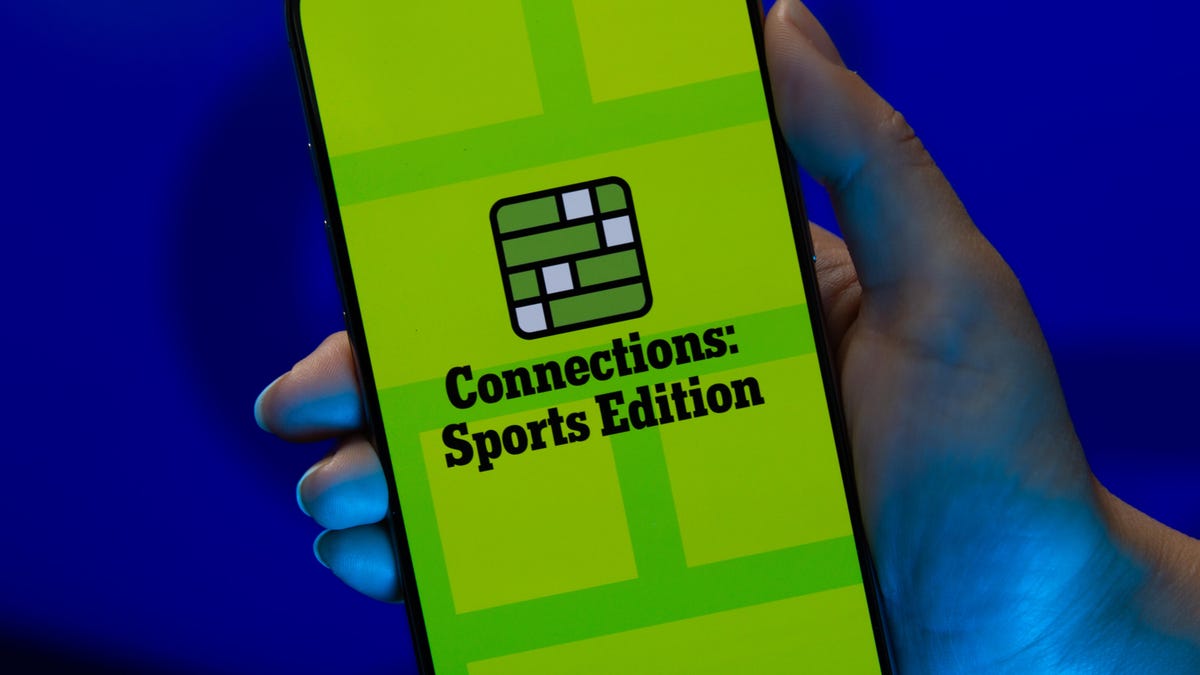
Looking for the most recent regular Connections answers? Click here for today’s Connections hints, as well as our daily answers and hints for The New York Times Mini Crossword, Wordle and Strands puzzles.
Today’s Connections: Sports Edition has a real mix of categories, including one that’s all about a certain famous athlete. If you’re struggling with today’s puzzle but still want to solve it, read on for hints and the answers.
Connections: Sports Edition is published by The Athletic, the subscription-based sports journalism site owned by The Times. It doesn’t appear in the NYT Games app, but it does in The Athletic’s app. Or you can play it for free online.
Read more: NYT Connections: Sports Edition Puzzle Comes Out of Beta
Hints for today’s Connections: Sports Edition groups
Here are four hints for the groupings in today’s Connections: Sports Edition puzzle, ranked from the easiest yellow group to the tough (and sometimes bizarre) purple group.
Yellow group hint: Swing away!
Green group hint: What’s that on your bat?
Blue group hint: Catch the football.
Purple group hint: Lake Placid or Lillehammer.
Answers for today’s Connections: Sports Edition groups
Yellow group: Baseball bat materials.
Green group: Associated with George Brett.
Blue group: NFL rookie WRs.
Purple group: Olympic ____.
Read more: Wordle Cheat Sheet: Here Are the Most Popular Letters Used in English Words
What are today’s Connections: Sports Edition answers?
The yellow words in today’s Connections
The theme is baseball bat materials. The four answers are aluminum, ash, birch and maple.
The green words in today’s Connections
The theme is associated with George Brett. The four answers are 5, pine tar, Royals and third base.
The blue words in today’s Connections
The theme is NFL rookie WRs. The four answers are Burden, Egbuka, Golden and McMillan.
The purple words in today’s Connections
The theme is Olympic ____. The four answers are Games, rings, torch and village.
Don’t miss any of our unbiased tech content and lab-based reviews. Add CNET as a preferred Google source.
Technologies
Christmas Eve Gaming Crushed as Steam Goes Offline
Services related to the popular game hub seem to slowly be returning as of Wednesday afternoon.

Your Christmas Eve gaming session might not go as planned. Online gaming hub Steam went down on Wednesday. As of about 1:30 pm PT, the Steam store page was once again accessible, so services seemed to be coming back online.
The Steam outage appeared to begin mid-afternoon ET, according to Downdetector, which monitors site outages. (Disclosure: Downdetector is owned by the same parent company as CNET, Ziff Davis.)
A representative for Steam did not immediately respond to a request for comment.
As of Wednesday noon PT, Steam’s official X and Bluesky accounts hadn’t posted anything about the outage.
Gamers certainly noticed. «Steam down, Steam down!!!» wrote one Bluesky user.
Others commented on the bad timing just as gamers were enjoying time off or receiving gaming gifts. «‘You got a gift on Steam!’ oh cool ‘Steam is down’ oh cool,» wrote another Bluesky user.
-

 Technologies3 года ago
Technologies3 года agoTech Companies Need to Be Held Accountable for Security, Experts Say
-

 Technologies3 года ago
Technologies3 года agoBest Handheld Game Console in 2023
-

 Technologies3 года ago
Technologies3 года agoTighten Up Your VR Game With the Best Head Straps for Quest 2
-

 Technologies4 года ago
Technologies4 года agoBlack Friday 2021: The best deals on TVs, headphones, kitchenware, and more
-

 Technologies4 года ago
Technologies4 года agoVerum, Wickr and Threema: next generation secured messengers
-

 Technologies4 года ago
Technologies4 года agoGoogle to require vaccinations as Silicon Valley rethinks return-to-office policies
-

 Technologies4 года ago
Technologies4 года agoOlivia Harlan Dekker for Verum Messenger
-

 Technologies4 года ago
Technologies4 года agoiPhone 13 event: How to watch Apple’s big announcement tomorrow

